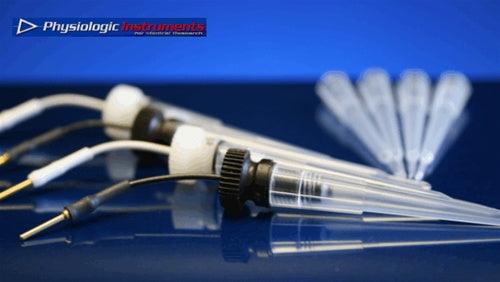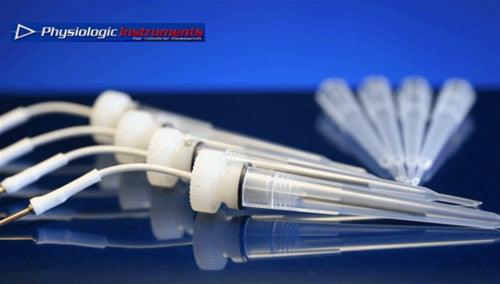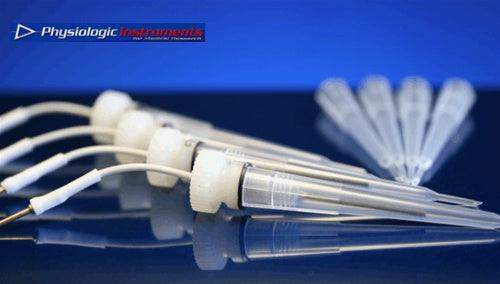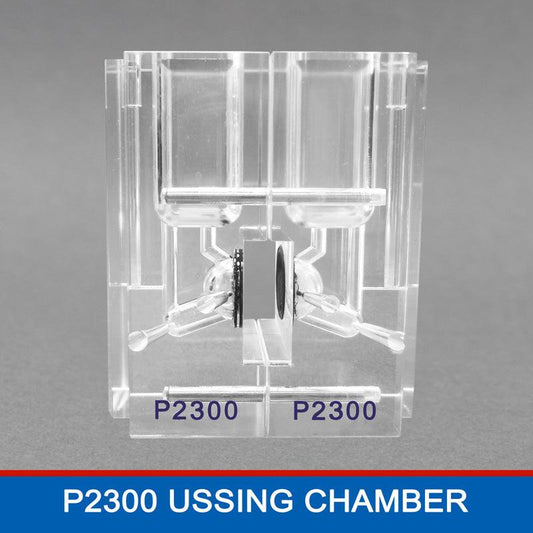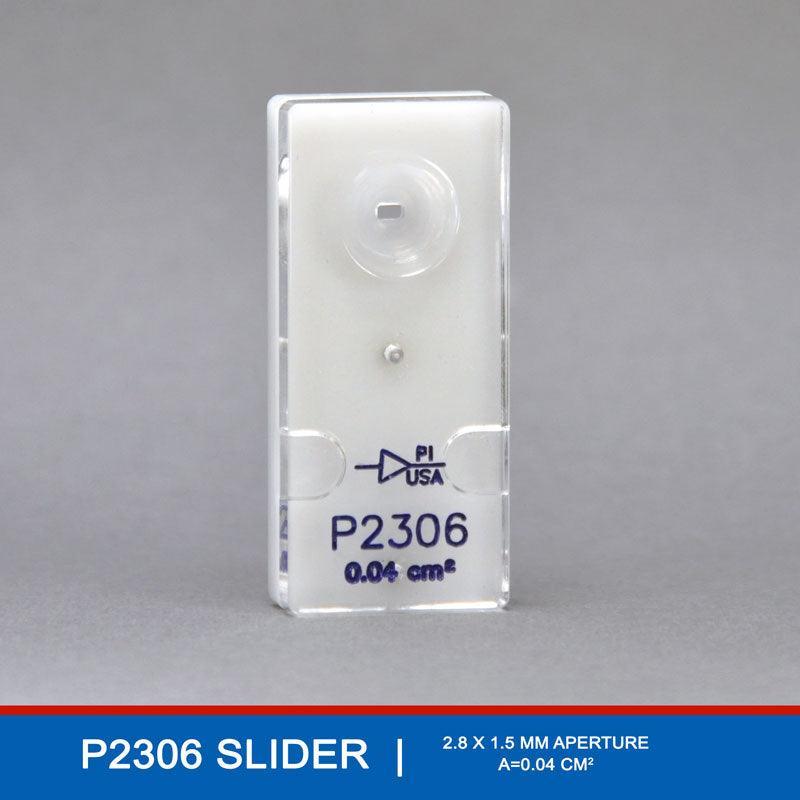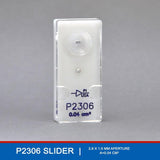P2306B EasyMount Ussing Chamber Slider
The P2306B Ussing Chamber Slider offers a solution for researchers working with small, delicate tissue samples, such as mouse trachea, in high-resolution electrophysiological studies. With a compact 3.5 x 1.8mm frame and a carefully calibrated aperture area of 0.057 cm², this chamber slider enables researchers to obtain accurate, controlled measurements of ion transport, tissue permeability, and other physiological parameters from a precisely defined tissue area. Designed to integrate seamlessly with the EasyMount P2300 Chamber system, the P2306B Slider supports stable, reproducible experimental conditions essential for in-depth tissue analysis and consistent data collection, ultimately enhancing the quality of your research outcomes.
⦿ To be used with P2300 EasyMount Ussing Chambers- Regular price
- $218.00
- Regular price
-
- Sale price
- $218.00
- Unit price
- per
EasyMount Slider Details

P2306B EasyMount Ussing Chamber Slider for Small Tissues such as Mouse Trachea
APETURE SIZE: 3.5x1.8MM | Membrane Area = 0.057 cm² | No Mounting Pins
The P2306B Ussing Chamber Slider is a specialized component of the EasyMount Ussing chamber P2300 system, designed primarily for high-precision electrophysiological studies on small tissue samples, including segments like the mouse trachea. Its compact design, measuring 3.5 x 1.8mm, reflects the need for accurate, controlled analysis in research applications where small, delicate samples are required. By focusing on small tissues, this slider addresses the challenges of tissue accessibility and handling, especially when working with limited sample sizes or fragile tissues that are often challenging to mount and manage.
One of the unique aspects of the P2306B Slider is its aperture area of 0.057 cm², which is particularly beneficial for achieving controlled measurements of ion transport, tissue permeability, and other electrophysiological parameters. The aperture's specific size ensures that researchers can focus on a precisely defined area of tissue, maximizing data reliability by eliminating peripheral effects that might otherwise affect readings. This is crucial for experiments that require high resolution and sensitivity, as it minimizes the influence of adjacent tissues or other variables outside the defined aperture area.
The slider’s EasyMount design is another key feature that streamlines the process of tissue mounting, offering a straightforward and efficient setup that minimizes preparation time and reduces the risk of sample damage. Unlike traditional systems that may require pins or other mounting tools, the P2306B is pin-free, allowing researchers to secure the tissue directly into place without puncturing or stressing it. This feature is advantageous when working with highly sensitive samples, as it helps maintain tissue integrity and minimizes potential artifacts caused by physical mounting stress. The lack of mounting pins also contributes to faster setup and turnaround times, making it easier to conduct multiple tests or adjust configurations in quick succession.
The P2306B Ussing Chamber Slider is specifically optimized for use within the P2300 Chamber system, ensuring seamless compatibility and consistent performance. In conjunction with the P2300 system, the P2306B slider allows for accurate and reproducible measurements, thanks to the system’s ability to maintain a stable environment for the tissue sample. This stability is critical for studies involving ion channel function, drug response, and other physiological processes that rely on tightly controlled experimental conditions. The EasyMount system as a whole represents a sophisticated approach to tissue mounting and analysis, leveraging design efficiencies to enhance the quality and reproducibility of data across studies.
How to use the P2306B EasyMount Ussing Chamber Slider
To use the P2306B Ussing Chamber Slider with a mouse trachea sample in the P2300 Ussing Chamber System, please follow these instructions:
-
Tissue Preparation: The researcher begins by excising a small section of the mouse trachea tissue. Because the trachea is delicate, care must be taken to handle it minimally to prevent damage, ensuring that the tissue sample remains viable for analysis. This tracheal section is then kept in a physiological solution to maintain cellular viability and mimic the in vivo conditions of the tissue.
-
Mounting the Tissue in the P2306B Ussing Chamber Slider: The EasyMount design of the slider allows for a straightforward mounting process, where the tracheal tissue is placed over the 0.040 cm² aperture without the need for mounting pins. This pin-free design is particularly advantageous, as it reduces the risk of creating artifacts from physical stress on the tissue. The tissue is aligned so that it covers the aperture, isolating a defined area for precise measurements of physiological parameters.
-
Assembling the P2300 Ussing Chamber System: Once the tissue is mounted in the P2306B Slider, it is inserted into the P2300 Ussing Chamber system, which stabilizes the environment around the sample by separating the tissue into two sides, usually mimicking the luminal and basolateral sides. The system allows the researcher to fill each side with specific solutions that replicate in vivo conditions or introduce experimental variables. The P2300 can also heat or aerate these solutions to ensure physiological relevance.
-
Electrophysiological Measurements: With the tissue mounted and the chamber system assembled, the researcher can initiate electrophysiological measurements. Electrodes on each side of the tissue allow for the measurement of ion transport and voltage differences across the tissue. This setup is ideal for studying aspects like epithelial transport, barrier function, or the tissue’s response to pharmacological agents. The defined aperture area and stable mounting provided by the P2306B Slider ensure that readings are accurate, localized, and unaffected by extraneous tissue portions.
-
Data Collection and Analysis: Throughout the experiment, the P2300 system maintains a controlled environment, enabling continuous monitoring and reliable data collection. The measurements gathered offer insights into the physiological function of the tracheal epithelium, potentially illuminating mechanisms of disease, transport properties, or drug responses specific to the respiratory tissue.
The P2306B Ussing Chamber Slider and the P2300 system together provide a streamlined, reliable approach for analyzing small tissue samples like the mouse trachea. This system not only enhances the precision and reproducibility of data but also simplifies the process of studying small, fragile tissues in a controlled and physiologically relevant setting. If you need any assistance with our sliders or system, please contact us.


